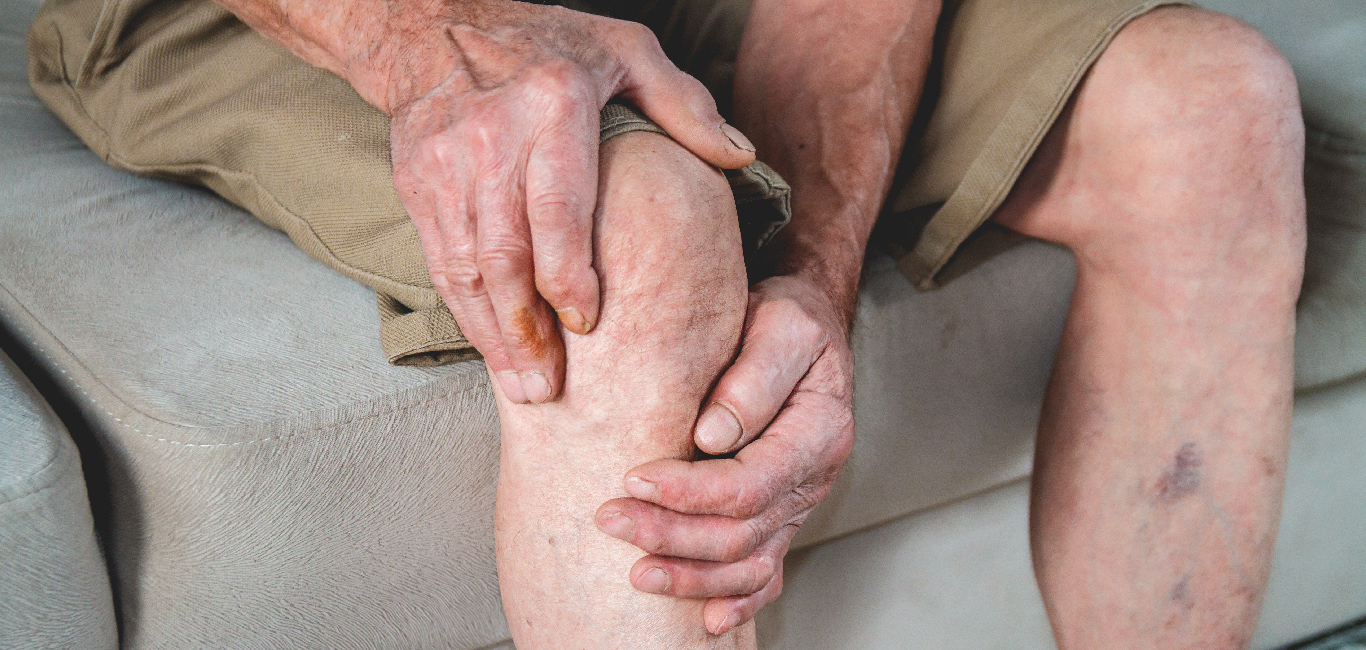
Osteoarthritis (OA) is a common type of arthritis that occurs in weight-bearing bone joints such as knees, hips, feet, elbows, spine and hands. The condition starts off gradually and becomes worse over time due to the wear and tear of cartilage, a cushioning tissue that is present at the ends of bones within joints.
This loss of cartilage enables bones to rub against each other causing pain, swelling and stiffness, and might lead to loss of joint mobility in severe cases. The condition is non-curable since the wear of cartilage cannot be reversed. However, with treatment and lifestyle modifications, the symptoms can be managed, and progression of the condition can be delayed.
Individuals with OA are at increased risk of falls due to decreased joint function, weakness of muscles covering the affected joint and impaired standing balance. Both men and women are equally at risk of developing OA until the age of 45, but beyond that age women are more prone to developing the condition.
Symptoms
Osteoarthritis can affect any joint of the body, but the larger weight-bearing joints such as the knees, hips, elbows, feet, hands and spine are often the first to be affected. The typical signs and symptoms associated with the condition are:
- Pain in joints often experienced during or after movement
- Stiffness of joints especially after getting out of bed in the morning
- Tenderness, swelling and redness of muscles covering the joints
- Reduced range of joint movement
- A grating or crackling sound from the joints
- A ‘doorknob’ like appearance of affected joints
In extreme cases, the pain can become so intense that it wakes persons from sleep.
Causes
Osteoarthritis occurs when the tissue cushioning joints at the end of large bones, called cartilage, wears out. The condition progresses gradually and there are several predisposing factors marking the occurrence and progression of osteoarthritis. Some of the risk factors include:
- Age and gender: OA occurrence increase with age in both men and women up to the age of 45. Beyond that age, women are seen to be at a higher risk of developing the condition, with the risk for men and women equalizing after the age of 80 years
- Joint injury or overuse: Repetitive movement of joints such as knee bending, sprinting, excessive stress on joints in high-impact sports, construction work, physical-education teaching and past fractures can damage the cartilage and increase the risk of developing OA
- Obesity: In overweight individuals, the weight-bearing joints are under higher stress, which increases their risk of developing OA
- Genetics: An individual with a family history of osteoarthritis is more likely to develop the condition than others
- Bone density and deformity: A decrease in bone mineralization and malformed joints or cartilage increases the risk of developing OA
Diagnosis
A combination of physical examinations, blood tests and imaging can help establish a confident diagnosis of osteoarthritis. These include:
- The typical signs and symptoms of OA are pain, tenderness, swelling and a decreased range of motion
- X-rays can show transparent images of cartilage indicating its loss and can also show bone deformity and reduced density of the affected joint
- An MRI can also help in picturizing wear of the cartilage in a joint. While this is not often needed, a doctor can ask for this in case more information is required
- There is no specific blood test for OA, but certain inflammatory markers in the blood such as C-reactive protein (CRP) and erythrocyte sedimentation rate (ESR) can be accessed through a test
- Analysis of the synovial fluid between the joints can help rule out the cause of inflammation, whether it’s because of gout, infection or any other form of arthritis
Treatment
Treatment of osteoarthritis usually involves short-term and long-term goals to improve the quality of life of an individual. The short-term goal is to reduce pain and inflammation of the joint. This can be done by:
- Pain-reliever and anti-inflammatory drugs such as paracetamol, ibuprofen, naproxen, etoricoxib and celecoxib
- Heat and cold compression over joints, using joint braces, orthotics and wearing appropriate footwear while moving
- Transcutaneous electrical nerve stimulation (TENS) provides short-term pain relief by inducing an electric current in the affected joint area, often used in knee and hip joints
Long-term goals are to delay the progression of OA and improve quality of life. The treatments include:
- Weight reduction, exercise to strengthen muscles around the joints and slow stretching to increase the flexibility of joints, among other physical therapies
- Injecting steroids directly into the joints to reduce inflammation
- Reducing friction between joints by lubricating them with synovial fluid making substances called hyaluronan or hylan products
- Taking supplements of cartilage-making substances like chondroitin and glucosamine
- Joint replacement surgery can be prescribed when there is excessive narrowing of the joint and there is no response against pain with medication. The damaged joint is replaced with an artificial one made usually of metal
- Osteotomy is another surgical procedure in which a part of the knee is cut and reshaped to shift the body’s weight away from the worn-out part
Sources

















